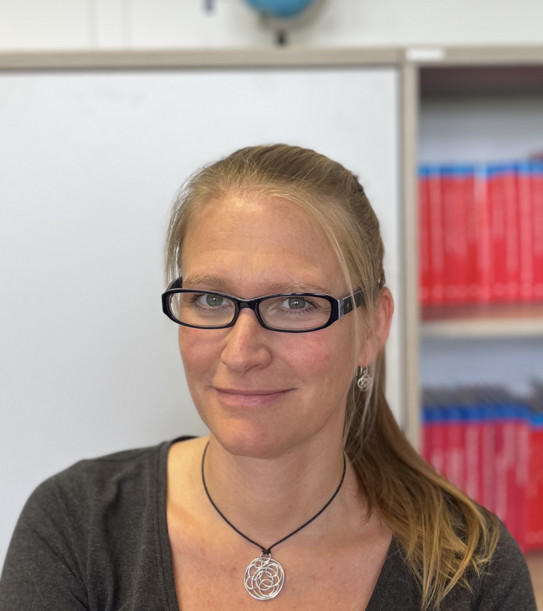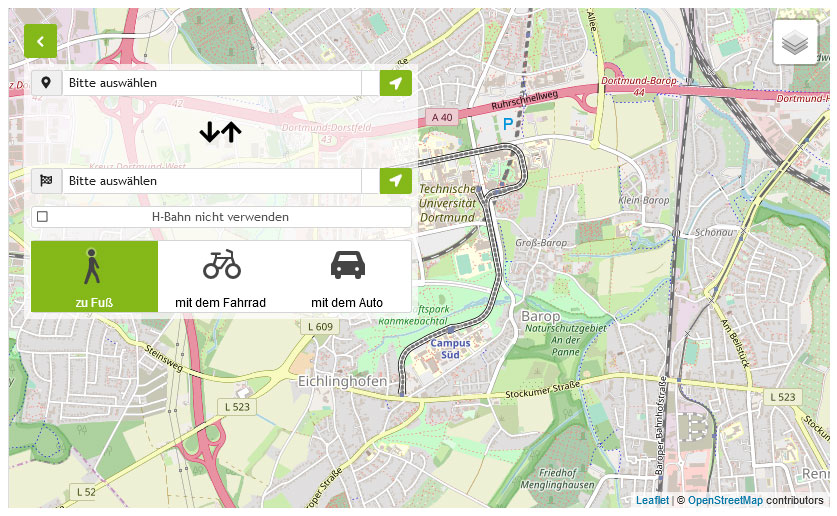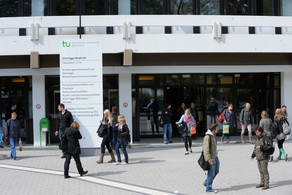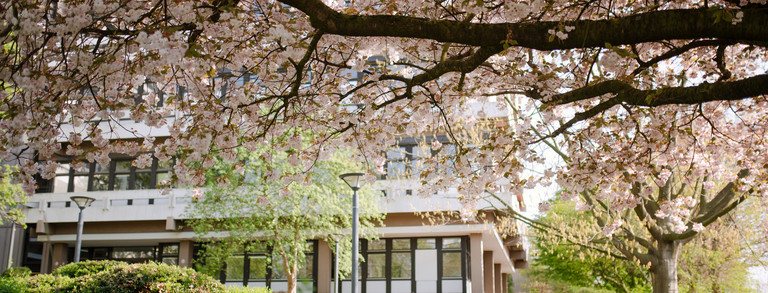Prof. Dr. Sarah Buschfeld
Chair of English Linguistics (Multilingualism)
Office:
Emil-Figge-Str. 50 , Room 3.314
Tel:
+49 231 755 2888
E-Mail:
sarah.buschfeldtu-dortmundde
Sprechstunden finden in der vorlesungsfreien Zeit und im Sommersemester 2025 nur nach vorheriger Absprache statt.
Bitte kontaktieren Sie dafür Frau Prof. Buschfeld per E-Mail.
Bitte beachten Sie zudem folgende wichtige Information:
Für Auskünfte zu Noten und Unterschriften in Studienbüchern, wenden Sie sich bitte per E-mail an die zuständige Sekretärin Frau Lorenschait unter carina.lorenschaittu-dortmundde.
_____________________________________________________________________________________________________________________
Office hours will only take place during lecture-free period and in the summer semester 2025 by prior arrangement.
Please send an E-Mail to Mrs. Buschfeld.
Please note the following important information:
For grades and signatures, please contact the secretary Mrs. Lorenschait by e-mail carina.lorenschaittu-dortmundde.

Academic profile
- Bi-/multilingualism
- World Englishes
- Language contact, variation, and change
- Sociolinguistics
- First and Second Language Acquisition
- Morphosyntax
Current projects
- Language use and attitudes in multilingual St. Martin
- Englischunterricht und Mehrsprachigkeit im Primarschulbereich (in Kooperation mit der Ostenberg-Grundschule Dortmund)
- Since 2013: ‘English in Namibia or Namibian English(es)’ (in collaboration with Prof. Dr. Anne Schröder and, formerly, Prof. Dr. Markus Bieswanger, PD Dr. Alexander Kautzsch)
- Since 2015: member of the research network ‘Varieties of English in the Indo-Pacific’ (VEIP; project leader of the subproject ‘Singapore: English in Contact, Sociocultural Aspects’ (in collaboration with Prof. Dr. Edgar W. Schneider); VEIP project leaders Prof. Dr. Pam Peters and Prof. Dr. Kate Burridge)
Past projects
- 2007–2011: ‘The English Language in Cyprus: An Empirical Investigation of Variety Status’, PhD project, University of Cologne.
- 2012–2018: ‘Investigating Children’s Acquisition of English as a First Language in Singapore’, Habilitation project, University of Regensburg.
Publications
- submitted. Multilingualism: A Sociolinguistic and Acquisitional Approach (with Patricia Ronan & Manuela Vida-Mannl). Heidelberg: Springer.
- 2020. Children’s English in Singapore: Acquisition, Properties, and Use. [Routledge Studies in World Englishes]. London: Routledge.
- 2013. English in Cyprus or Cyprus English? An Empirical Investigation of Variety Status [Varieties of English Around the World G46]. Amsterdam: John Benjamins.
- to be submitted 2023. ed., Statistics Today: Research Questions, Insights and Challenges (working title; with Claus Weihs & Walter Krämer). Heidelberg: Springer.
- submitted. ed., Acquisition and variation in World Englishes: Bridging paradigms and rethinking approaches (with Mirjam Schmalz, Manuela Vida-Mannl & Thorsten Brato). Berlin: De Gruyter Mouton.
- 2021. Ed., Focus on Orality, Literacy – and the Digital? New Perspectives on Language of Immediacy and Language of Distance. Special Issue Anglistik. International Journal of English Studies 32(2).
- 2020. Ed., Modelling World Englishes: A Joint Approach to Postcolonial and Non-Postcolonial Varieties (with Alexander Kautzsch). Edinburgh: Edinburgh University Press.
- 2014. Ed., The Evolution of Englishes. The Dynamic Model and beyond [Varieties of English Around the World G49] (with Thomas Hoffmann, Magnus Huber & Alexander Kautzsch). Amsterdam: John Benjamins.
- 2021c. "Repeated undersampling in PrInDT (RePrInDT): Variation in undersampling and prediction, and ranking of predictors in ensembles" (with C. Weihs.) available at arXiv: https://arxiv.org/abs/2108.05129
- 2021b. "NesPrInDT: Nested undersampling in PrInDT" (with C. Weihs.) available at arXiv: https://arxiv.org/abs/2103.14931
- 2021a. "Combining Prediction and Interpretation in Decision Trees (PrInDT) - a Linguistic Example." (with C .Weihs). available at arXiv: http://arxiv.org/abs/2103.02336
- 2021. “Modelling spoken and written English: An introduction” (with Sven Leuckert). Anglistik. International Journal of English Studies 32(2): 7-14.
- 2017. “Towards an integrated approach to postcolonial and non-postcolonial Englishes” (with Alexander Kautzsch). World Englishes 36(1): 104-126.
- 2014. “English in Namibia: a first approach” (with Alexander Kautzsch). English World-Wide 35(2): 121-160.
- Fc. “English in Cyprus” (with Manuela Vida-Mannl). In Raymond Hickey (ed.), The New Cambridge History of the English Language, Vol. 4. Cambridge: Cambridge University Press.
- Fc. “Namibia”. In Raymond Hickey & Kate Burridge (eds.), The New Cambridge History of the English Language, Vol. 6. Cambridge: Cambridge University Press.
- 2022. “English around the World: New realities, new models, and the case of Sint Maarten” (with Wiebke Ahlers). In A. Ngefac, H.-G. Wolf & T. Hoffmann (eds.), World Englishes and Creole Languages Today. Vol. 1: The Schneiderian Thinking and Beyond. Munich: Lincom Europa, 39–63.
- Fc. “From second to first language: Language shift in Singapore and Ireland” (with Patricia Ronan). In Mirjam Schmalz, Manuela Vida-Mannl, Sarah Buschfeld & Thorsten Brato (eds.), Acquisition and Variation in World Englishes: Bridging Paradigms and Rethinking Approaches. Berlin: De Gruyter Mouton.
- Fc. “Investigating child language acquisition from a joint perspective: A comparison of traditional and new L1 speakers of English” (with Gerold Schneider). In Mirjam Schmalz, Manuela Vida-Mannl, Sarah Buschfeld & Thorsten Brato (eds.), Acquisition and Variation in World Englishes: Bridging Paradigms and Rethinking Approaches. Berlin: De Gruyter Mouton.
- Fc. 2022. “The pluricentricity vs. pluriareality debate: What postcolonial diffusion of English, transnational contact and multilingualism can tell us”. In Philipp Meer & Ryan Durgasingh (eds.), Pluricentricity and Pluriareality: Dialects, Variation, and Standards. Amsterdam: John Benjamins.
- 2022. “The geographical and demographic expansion of English” (with Edgar W. Schneider). In Salikoko S. Mufwene & Anna María Escobar (eds.), The Cambridge Handbook of Language Contact. Vol. 1: Population Movement and Language Change. Cambridge: Cambridge University Press, 583–610.
- 2021. “L1 Singapore English: The influence of ethnicity and input". In Kate Burridge & Pam Peters (eds.), Exploring the Ecology of World Englishes in the Twenty-First Century: Language, Society and Culture. Edinburgh: Edinburgh University Press, 193-214.
- 2021. “Grassroots English, learner English, second-language English, English as a lingua franca...: What’s in a name?” In Christiane Meierkord & Edgar W. Schneider (eds.), World Englishes at the Grassroots. Edinburgh: Edinburgh University Press, 23-46.
- 2021. “Expanding boundaries of a function word: uses of one in Early Modern and Modern English” (with Edgar W. Schneider). In Peter J. Grund & Megan Hartman (eds.), Studies in the History of the English Language VIII: Boundaries and Edges in the History of English. (publisher: Mouton de Gruyter).
- 2020. "Introduction". In Sarah Buschfeld & Alexander Kautzsch (eds.), Modelling World Englishes: A Joint Approach to Postcolonial and Non-Postcolonial Varieties. Edinburgh: Edinburgh University Press, 1-15.
- 2020. "Synopsis: Fine-tuning the EIF Model". In Sarah Buschfeld & Alexander Kautzsch (eds.), Modelling World Englishes: A Joint Approach to Postcolonial and Non-Postcolonial Varieties. Edinburgh: Edinburgh University Press, 397-415.
- 2020. “Multilingual language acquisition in Singapore”. In Jakob Leimgruber & Peter Siemund (eds.), Multilingual Global Cities: Singapore, Hong Kong and Dubai. London: Routledge, 205-228.
- 2020. “Language acquisition and World Englishes”. In Daniel Schreier, Marianne Hundt & Edgar W. Schneider (eds.), Cambridge Handbook of World Englishes. Cambridge: Cambridge University Press, 559-584.
- 2020. “Theoretical models of English as a world language” (with Alexander Kautzsch). In Daniel Schreier, Marianne Hundt & Edgar W. Schneider (eds.), Cambridge Handbook of World Englishes. Cambridge: Cambridge University Press, 51-71.
- 2020. “English and German in Namibia” (with Anne Schröder). In Raymond Hickey (ed.), English in the German-speaking World. Cambridge: Cambridge University Press, 334-360.
- 2018. “From colonial dynamism to current transnationalism: a unified view on postcolonial and non-postcolonial Englishes” (with Alexander Kautzsch und Edgar W. Schneider). In Sandra C. Deshors (ed.), Modelling World Englishes in the 21st Century: Assessing the Interplay of Emancipation and Globalization of ESL varieties. Amsterdam: John Benjamins, 15-44.
- 2018. “World Englishes: Postcolonial Englishes and beyond” (with Edgar W. Schneider). In Ee Ling Low & Anne Pakir (eds.), World Englishes: Re-Thinking Paradigms. London: Routledge, 29-46.
- 2014. “English in Cyprus and Namibia: a critical approach to taxonomies and models of World Englishes and Second Language Acquisition research”. In Sarah Buschfeld, Thomas Hoffmann, Magnus Huber & Alexander Kautzsch (eds.), The Evolution of Englishes. The Dynamic Model and beyond. Amsterdam: John Benjamins, 181-202.
- 2011. “English in Cyprus: second language variety or learner English?” (with Christiane M. Bongartz). In Joybrato Mukherjee & Marianne Hundt (eds.), Exploring Second- Language Varieties of English and Learner Englishes. Bridging a Paradigm Gap. Amsterdam: John Benjamins, 35-54.
- 2011. ”Student and teacher action research: a joint approach” (with Christiane M. Bongartz & Myrle Dziak-Mahler). In Iman M. Laversuch & Regina Einmahl (eds.), Multiple Language, Variation, Variety and Use. Aachen: Shaker, 33-44.
- 2010. ”Kontrastive Alphabetisierung am Beispiel Deutsch-Arabisch“ (with Christiane Schöneberger). In Heike Roll & Karen Schramm (eds.), Alphabetisierung in der Zweitsprache Deutsch. Duisburg: Gilles & Francke, 61-73.
- 2018. “Michael Percillier. World Englishes and Second Language Acquisition: Insights from Southeast Asian Englishes.” English World-Wide 39(1): 111-116.
- 2018. “Elena Seoane & Cristina Suárez-Gómez (eds.). World Englishes: New Theoretical and Methodological Considerations.” English Language and Linguistics 22(3): 546-551.
- 2016. “Peter Collins (ed.). Grammatical Change in English World-Wide.” ICAME Journal 40(1): 154-159.
- 2016. “Daniel Schreier & Marianne Hundt (eds.). English as a Contact Language.” World Englishes 35(2): 329-332.
- 2009. “Die Geschichte der USA II: ‘We the People‘ – Die Weltmacht USA im 20. Jahrhundert. Begleitmaterialien – englisch/deutsch“ (with IBIS – Initiative for Bilingual Studies). Geschichte Interaktiv 12. Münster: Anne Roerkohl Dokumentarfilm GmbH. Film-, Video- und Multimediaproduktion.
- 2007. “Amerikanische Revolution/American Revolution” (with Paula Albert, Christiane M. Bongartz, Myrle Dziak-Mahler und Christian Eickbusch). Geschichte betrifft uns 6. Bergmoser + Höller Verlag AG.







